Tips on How To Have Better, More Effective Recycling Habits

Recycling is one of the most overlooked topics in today’s society, and most people think that it is just a waste of time. If you look at the environment’s current state, recycling is the best way to save our planet and it’s the only thing we can do to contribute something as well.
There are many ways for you to recycle. You can even practice them while you’re doing household chores or running errands at the store. There’s no doubt there are many ways for you to develop better recycling habits. For you to recycle effectively, you first need to know how to segregate your waste from the things that you need to keep to the things that you need to throw away.
To further give you some concrete ideas, here are some tips to help you develop the best effective recycling habits.
Practice Not Using Plastic Bags!
This is a widely known and implemented practice for every country in the world to reduce the risk of having disasters such as flooded streets due to plastics blocking drains. You might want to avoid packing your goods in a grocery bag over the counter and start bringing your eco-friendly bags since these plastic bags biodegrade much faster than normal plastic which is better not just to for our natural environment but to our wild animals as well. A study shows that when a grocery bag is not disposed of properly, it dissolves into potentially harmful microplastics that can kill animals.


Know Which Plastics Are To Be Recycled
It is only beneficial to know the different types of plastic because not all of them are treated equally when it comes to recycling. Rigid plastics labelled by resin codes are commonly recyclable. Other than the numbers included in this list, the rest are less recyclable and you should take extra precautions when doing so. You also need to keep in mind that it is very difficult to recycle bags that can break down naturally like paper bags, chip bags, or cracker bags.
Practice Good Segregation
Not everyone has enough knowledge on how to segregate their trash in the best way possible. Yes, trash bins have labels on them, which often say “non-biodegradable, biodegradable, or recyclable,” but how can you practice proper segregation at home when you don’t know which trash to separate from the other? Here are some steps that will help you manage your segregation skills:
- Have separate bins for dry and wet waste inside your kitchen;
- Sanitary waste should be thrown away in a paper bag;
- Dispose of wet waste outside your house daily;
- Bring biodegradable waste to a place where it can be composted (even your nearest garden will suffice).
- Plastics that are thrown into the dry waste bin should be kept dry especially if they come from the kitchen;
- Rinse grass or plastic containers if they have food residue.


Know Your Hazardous Materials
There are some used materials in the house that no longer serve a purpose and need to be disposed of properly. These materials can be harmful to the environment and can sometimes be hazardous to your health too! It is essential to know what these wastes are and how to dispose of them properly to avoid further complications. Hazardous materials should not be included in your general waste disposal as they require special handling treatment before they can be disposed of. It would be best to contact your local waste management team to secure safety advice from them. Here is a list of some hazardous materials that you should separate from your waste:
- Batteries
- Tires
- Paint
- Solvents
- Fluorescent light tubes
- Aerosol
- Gas Canisters
- Oil and Fuel
- Electrical Appliances
- Plaster Board
- Asbestos
If you wish to have a greener environment for further generations to enjoy, start the change within the corners of your house to set the best example for your neighborhood. Proper disposal of your waste can lead to developing habits of effectively recycling things. We can do this!
What recycling methods do you use? What are some of your other suggestions?
Let’s share the word and do this together. The more people we have joining hands, the better we can do. For other ideas on how to keep our environment clean and healthy, check out this article with tips and tricks for a better world
Sources:
https://www.earthday.org/youre-doing-it-wrong-7-tips-to-recycle-better/
https://www.jaagore.com/current-issues/5-simple-ways-to-practise-waste-segregation
http://www.networkwaste.co.uk/waste-management/service/hazardous-waste-removal
How To Take Care Of The Environment

Will you take the responsibility to care for the environment?
All too often, giving care to the environment is an idea that we often neglect and take for granted. Many of us neglect most of our duties as chosen stewards for the better welfare of our planet. Environmentally-concerned people all around the world are fighting to raise awareness. We must also do our part and encourage people to start caring for their environment as early as now. You might really care about separating your trash, minimizing your emissions and reducing single use plastics, but your neighbor might not care at all. Is it best to confront them on their mistakes or suggest reasonable actions to take through explanation?
If we try to look at it on a bigger scale, the 2014 Greendex Sustainable Consumption Ranking Index has gathered 18 countries and ranked them according to their sustainable behavior. The order follows from most to least sustainable country. The research found that American consumers were listed and ranked as the lowest country to provide correct sustainable strategy. It was found that they were the least to likely take action and care for the environment.
How do we educate people to care about the environment to make it more sustainable and freer from toxins? Here are some examples of what we can do to show and influence others to take similar action.
Understand that other people might not have the same education as you
It is difficult to believe that your next-door neighbor doesn’t care about the environment, or that they haven’t received the education you see as so fundamental. This is where the problem lies. The lack of knowledge on the subject, be it from where they grew up, the finances of their family, their schooling, or even their friend’s behavior are all factors that cause them to act in certain ways. Understanding that everyone around you may not have been lucky enough to receive a good education, will allow us to reset, be kind, and simply explain the benefits of taking care of our environment.
Make statements that are personal to the audience
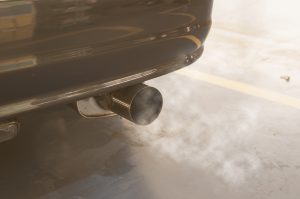
Not everyone takes topics about climate change as serious as activists who genuinely care for the environment. Most people think that the changes they experience in the environment today are things they should not care about. They often believe that they should not waste time picking up plastic bottles and putting them where they belong. It is too easy for people to watch others around them dispose of their trash on the ground, which in turn influences others’ actions negatively. Will you admit that you threw that plastic wrapper thinking someone else would pick it up or that it’s not going to hurt you? Well you’re not alone. The majority of people have left their trash in the wrong place.
Instead of blaming people for not taking enough or no action, make statements that are personal to them. Use local stories as an example so your audience can relate to your statement. Some of them might have experienced some of the worst tragic calamities firsthand. You can also make use of current health effect statements like how we have polluted the air. You can then explain that this is due to the increasing number of private vehicles and the burning of plastic that can cause asthma and other respiratory problems. In essence, the blocked drainage due to littering and not disposing of plastic garbage can cause clogging and even floods.
Encourage people to show care the positive way
Talk about solutions and strategies on how to contribute more to have a better environment instead of telling your audience that it’s their fault and that humanity is doomed. Avoid talking about disasters and making it look like there is nothing else that they could do to lessen the effect on our environment. Focus on giving your audience the brighter side of the story and educate them on how to start caring in as compelling ways as properly possible. When carrying out messages that are intended for your readers, make it more personal and give them immediate opportunities so that they too can take the lead and make changes happen.
Use the influence of Social Media
Activists and people who would want to make a change and save the environment should shift their focus to informing the public about the number of people who are saving water and riding bikes instead of their vehicles that can cause air pollution. We should raise awareness to those who are making a significant change and doing the right thing.
Use the influence of social media to raise awareness so that we can create strong social support for those who take action to move forward and make a better climate-friendly environment.
Join your city’s local cleanup group

We don’t often think about how differently we could affect our environment from the comfort of our couch. We’re often not interested enough in the improvement of our surroundings. On World Cleanup Day, supposedly around 5% of our Earth’s population went out and helped clean up. Green Peace and other large organizations consistently do successful cleanups around the world. A quick Google search will tell you if there is a non-profit organization near you that’s working to clean up your area. You can also search Facebook for hashtags like #cleanup to find out If you can physically help in your area on their next clean up day.
Conclusion
We’ve only detailed some of the things we can do to help care for our environment. The challenge is now up to you to take action and help save what is left on mother earth. Take the lead and be the first to take responsibility because every action you take to achieve a better future for Earth in your hands. We all want a beautiful, clean, and pollution free life, so lets join our hands and work together to educate those without knowledge, become positive influencers, and spend our free time thinking and working towards a clean future.
How bad is pollution from different vehicles?

Pollution from different vehicles
Carbon monoxide (CO), nitrogen oxides, and hydrocarbons are released when fuel burns in an internal combustion engine. Carbon monoxide is produced when the carbon in fuel doesn’t all burn. An inefficient engine will burn more fuel and cause more emissions. Some fuel vapor leaves a vehicles engine through the exhaust. When pollutants like NOx or hydrocarbon combine in sunlight, they produce ozone. We don’t actually know how much of the total amount of air pollution is caused by vehicles, but even though it might be less than industrial production, it is still important to know which vehicles emit the most pollutants. The EPA estimates that on road vehicles cause 1/3 of air pollution in the USA while transportation causes 27%. We do have to remember that the older the vehicle, the more it pollutes.
Particulate matter (PM): Particulate matter is a mixture of small particles and droplets, including acids, such as nitrates and sulphates; organic chemicals; metals; soil; or dust. Combustion can produce a large quantity of very fine particles 10 nanometres in diameter or smaller, but it is regulated by measuring the total quantity of all PM particles sizes. The human body cannot protect against exposure to ultra fine particles, which can enter the heart and lungs through inhalation (Figure 1) and have serious health effects, including respiratory diseases and heart and lung conditions. Volatile organic compounds (VOCs) can have adverse health effects or contribute to air pollution. Exposure to black smoke exhaust has also been shown to increase the risk of developing lung cancer and therefore mortality risks. Methane, in the form of unburned fuel, is a tailpipe emission primarily for natural gas fuels. Although it is not toxic, methane has a global warming potential that is 25 times higher than that of CO2.
Emission Standards
Many national governments use emissions standards and testing to control the amount and types of harmful emissions that are released into the environment as a direct result of fuel combustion. The drive cycles required for emissions testing in different countries can be based on international standards as well as driving conditions in different locations. Euro emissions standards use two specific drive cycles. Since 2000, these cycles have been the European Stationary Cycle (ESC), a sequence of constant speeds and loads, and the European Transient Cycle (ETC), which simulates typical driving patterns. The EPA test is performed with various test cycles, including a transient test cycle, which includes urban and freeway driving conditions, and a steady state test with a sequence of constant speeds and loads (Dieselnet 2012).
Motorbikes
- 2-stroke
2 stroke engines have better gas mileage because they require less combustion. The spark plug in a 2 stroke has to burn oil and gasoline together, creating more smoke. The oil (2%-5%) and gas are combined in the fuel tank. A 2-stroke engine is cheaper because it doesn’t have any valves in the mechanisms, and is much smaller than a 4 stroke. It is also cheaper to repair. 2-stroke engines have more power than 4 stroke engines because they work harder. Higher RPM (rounds per minute) are achieved because of a lower mass of moving parts. This also means that 2-stroke bikes can get to higher speeds faster.
- 4-stroke
4 stroke engines use oil from a separate tank which makes them emit less smoke. 4-strokes have higher torque than 2-strokes, which means fuel consumption and noise is lower. Fuel efficiency is better because of how fuel is used in the combustion chamber.
Scooters
Scooters are not as high on the list as other vehicles that pollute the air. They are very effective for an owner because they’re quick, easy to drive, can often carry quite a heavy load, and are efficient in gas mileage. Especially in dense cities where temperatures don’t get too cold, scooters are the chosen mode of transport for many with enough money. Fuel injection and other new technology like catalytic converters are technological advances that reduce the amount of emissions from vehicles. Any older models or 2-stroke scooters actually can pollute more than a car. In general, scooters do emit less pollutants than larger vehicles, but questions still remain. How often do you take your ride in for a full check-up or emissions test? How much oil are you burning? How old is your scooter? How mileage efficient is your scooter?
Electric Scooters
Electric scooters are not as eco-friendly as they are thought to be. The actual use of a scooter is environmentally friendly, but the production of battery powered e-scooters has a significant impact on greenhouse gas emissions. Before scooters are sold, a lot of power goes into constructing e-scooters. While they are being used, they’re usually sourcing energy from electricity outlets that stem from coal fired power plants. After reaching their life limit, they are often not recycled or disposed of correctly, leaving depleted batteries on trash dumps.
Small Cars
Small cars have smaller engines. The bigger an engine, the more it emits pollutants. Small cars are usually very mileage efficient and do have the option to carry quite a bit of weight. We have to ask ourselves if we are treating the environment well if we are the only person in a 5-person car. Modern cars are some of the cleanest modes of transport if shared, but of course the more people in a vehicle, the better it is for our world.
Large Cars, SUVs and 4X4s
Larger cars have larger engines which burn more fuel.
They are less efficient, but stronger. SUVs tend to carry more people and don’t have much power, while large cars and pickup trucks are often fitted with large engines. They often are more heavy duty, and can carry more. According to tests it is proven that the stronger the engine, the more emissions are created during transport. For well-known reasons, 4X4 vehicles are used in areas that cannot be navigated by 2-wheel drive vehicles. We do however see people unnecessarily showing off with their large vehicles. Take the Hummer for example, being used on highways in America. This is the best example of how something so unnecessary is allowed to roam the streets.
Pick-up trucks
Pick-up trucks make up a large percent of the vehicles people drive, probably because of how multi functional they can be. They are however large engine vehicles which emit a lot of pollutants. In the US about 270 pick up trucks are sold every hour, and their main function is usually to haul and tow. Now with 4 door options, more people can ride in side but the flat bed at the back can carry whatever the owner wants. Recently, more electric powered pick up trucks are being offered as options. Good examples are the Nissan Leaf or the Chevy Volt hybrid. People are not that quick to jump on the electric vehicle train because of the low mileage range that can be traveled, and too few charging stations.
Trucks
There were roughly 11.5 million big semi-trucks that move freight in the US. It is estimated that they produce around 23% of greenhouse gas emissions in 2019. Globally, many older trucks with relatively inefficient (and highly polluting) engines are common. Truck modernization, along with better engine, tire, and vehicle maintenance, can significantly improve fuel economy in many cases. Trucks and buses that operate largely in urban areas with a lot of stop-and-go travel can achieve substantial benefits from using electric hybrid or hydraulic hybrid drive-trains. Typically, a 20–30% reduction in fuel consumption can be achieved via hybridization. Streamlining the trucks also helps to minimize fuel consumption as wind moves slowly around a streamlined truck.
Construction vehicles like bulldozers
Not only the dust being kicked up at construction sites is harmful for our lungs, but the large vehicles at work are often spewing black exhaust fumes. There are large uncertainties in estimates of emissions from construction equipment, partly due to the small number of published measurements. Generally, the newer and more expensive a construction vehicle is, the better its fuel efficiency is. In this vehicle class, the engines are much more powerful than cars. This means they use larger quantities of fuel, and they burn more fuel depending on the task at hand. The terrain they’re operating on also matters. If a bulldozer for example is digging through dense, rocky terrain, it will burn a lot more fuel than if it was just digging soil. Being in the vicinity of a construction site is often hazardous to our health.
Busses
Busses are an eco-friendly solution to transport if the buses are maintained well and fleets are renewed. This is the case because a bus holds many riders, compared to a personal vehicle. The longer the route, the more emissions are burnt. The typical bus produces about 1.3kg CO2 per km traveled. If there is 1 passenger on the bus with the driver for the majority of the route, it would be a very environmentally unfriendly solution. Therefore, finding the right number of buses travelling specific routes is very important. Of course, it also comes down to the type of fuel used.
Trams
In Melbourne, a study found that trams emit approximately 0.74 kg of carbon dioxide (CO2) per passenger kilometer. Buses showed the least impact, generating just 0.04 kg of CO2 per passenger kilometer, with cars and trains fairly equal at 0.25 kg of CO2 per passenger kilometer and 0.23 kg CO2 per passenger kilometer respectively. On average trams usually run under 50% capacity, so again the key here is to get the trams full. Because of trams high use of CO2 per kilometer, they are being replaced by buses in many cities.
Trains
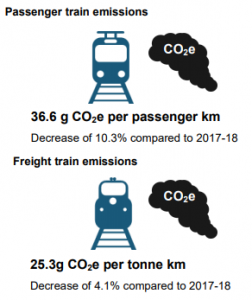
Trains travel long distances and new trains usually run on eco friendly power. In many places though, trains run on diesel. Some products are not transported by train because of the speed of travel. Long trains with many containers often take a long time to get to their destination. Especially fresh products are not transported by train. Railroad transport is cheaper over long distances, while truck transport is cheaper for short distances.
Ships
The shipping industry is responsible for a significant proportion of the global climate change problem. More than three percent of global carbon dioxide emissions can be attributed to ocean-going ships.
Since emissions are directly related to fuel consumption, when an engine is running as efficient as possible, it emits less pollution. Most engines burn a lot less fuel at lower speeds. Using ships to transport goods is about 100 times cheaper than air transport.
Airplanes
Aircraft emit huge amounts of CO2, currently accounting for around 11% of global greenhouse gasses. The U.S. Clean Air Act is designed to force the implementation of technological and operational innovation that prevents or reduces carbon pollution. The search is on for lighter and more efficient airplanes because as it stands, air travel emits tons of air pollution. 1 flight from New York to California, for example, generates around 20% of the pollution that your car emits over an entire year on average.

Mowers
Each weekend, about 54 million Americans
mow their lawns, using 800 million gallons of gas per year and producing tons of air pollutants. You probably haven’t seen the most heavy-duty lawn mowers there are, but they’re loud, fast, and comfortable to sit on. They actually are estimated to pollute more than 11 hours in the same hour time frame.
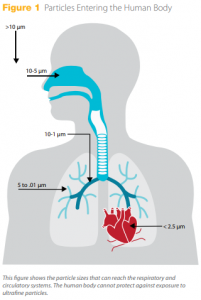
Bottom Line
Reducing our carbon footprint when choosing transport is one of the biggest problems we have. Using renewable forms of energy is important for every country to try. Governments are incentivizing renewable energy options, but perhaps too slowly. Cheaper taxes on electric vehicles may reduce exhaust fumes, but we are not quite sure if our efforts will pay off in time. For a full report on transportation and the emissions it causes, do check this out for further reading.
When and for what activities should we wear a mask?

A mask should be worn when the air quality is bad outside because it affects health. If there is a chance of long exposure to poor air quality people should be careful of spending too much time breathing poor air. A mask can also be worn to prevent yourself from getting sick.
This corresponds to different levels of air pollution for healthy people and the most vulnerable groups: people who suffer from chronic lung or heart disease, elderly, pregnant, and children.
N95 masks are not needed for short exposure, or when the air quality is good. N95 masks are also not needed in an indoor environment if the environment is filtered using indoor air purifiers.
There is a range of masks suitable for all activities and environments adapted to the use: in or out of the city, running, walking, commuting, sports and leisure, allergy relief, or for the work place. The more adapted a mask is to the activity and needs of the user, the more effective the protection from the effects of air pollution will be.
The most important thing about the prevention of pollutants or other harmful substances is to understand that air can be bad, and to have tools in place to battle it. During an epidemic like Covid-19, we are all very worried about getting sick. The Personal Protection Equipment (PPE) that people are sold is often not helpful. We need to understand that the air we breathe can be filled with harmful particles at any time. We also need to know that prevention of substances entering our system can happen very quickly and without us even knowing. The key is to protect yourself from hazardous particles by filtering your indoor air, minimizing contact, cleaning hands frequently, and wearing a mask that is fitted. At AryMask we ensure that you get a mask that fits.
Here 3 doctors offer their knowledge about surgical VS ffp3 certified masks. They don’t however mention that even a fitted mask cannot prevent those who are around you from getting sick. Any mask with a valve for that matter will allow cough droplets to escape into your surrounding.
Can you talk inside a gasmask?
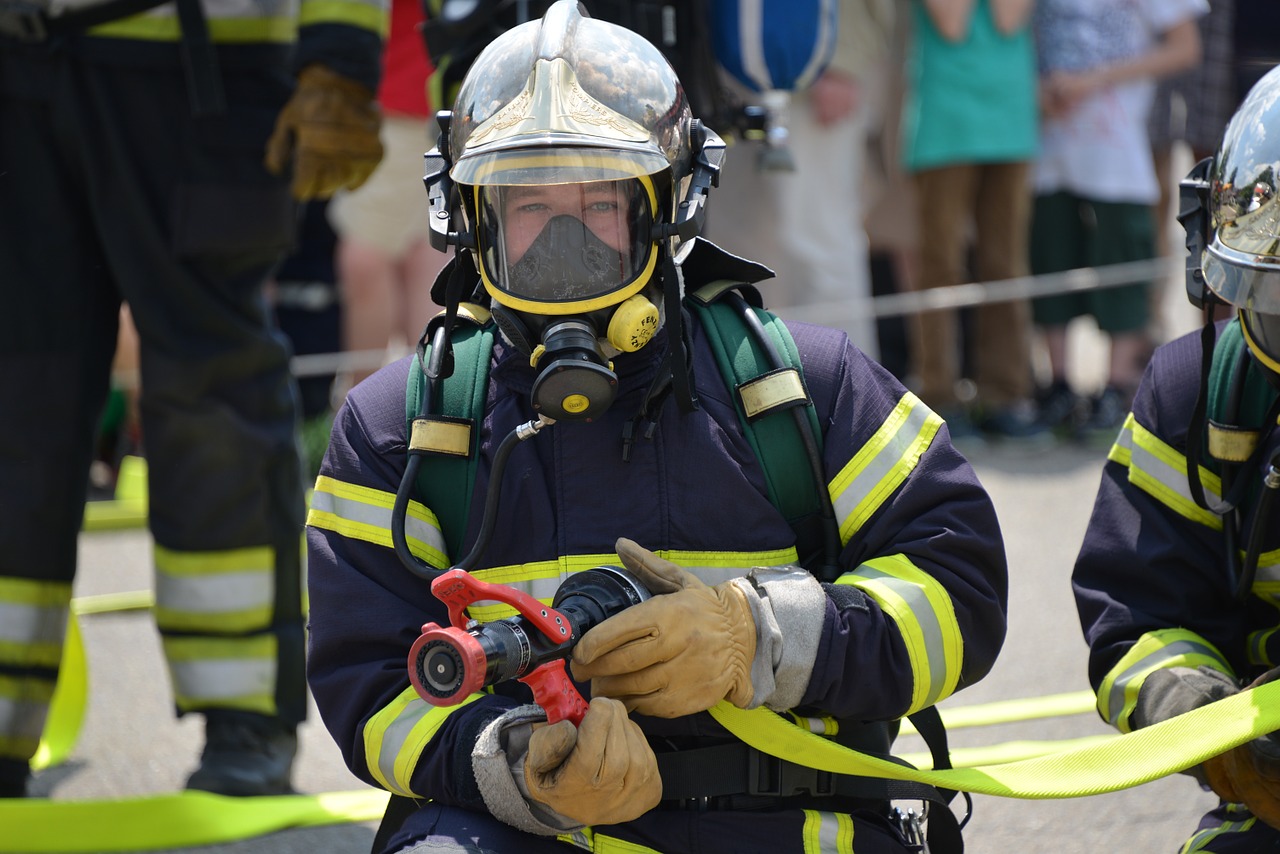
Yes, you can speak inside a gas mask. If anyone will hear you is a separate matter. Some high quality gas masks have voice transmitters. They are designed to make it easier for you to have a conversation while wearing a full face mask. It needs portable battery power however, a microphone on the inside and a speaker on the outside. This is more like an amplifier, increasing the volume of your voice.
Voice transmitters are usually only used for vehicle crewmen or drivers because they might make a gas mask more vulnerable to leaks. Some masks have microphones that connect to a radio or intercom.
It might also be that it is difficult to speak while wearing a tightly strapped mask. When speaking, as your jaw moves, the seal of the mask usually breaks and lets in air. Therefore it is extremely important to be able to breathe through your nose in your mask. You can learn to speak without moving your jaws too much but it can be very difficult to understand for the listener.
It is definitely not ideal to have a gas mask on and that’s why we have come up with technology to make it possible to have a conversation from a completely secluded uniform and mask.
If you need a half face gas mask we do have some in stock. Send us a message here for more details.
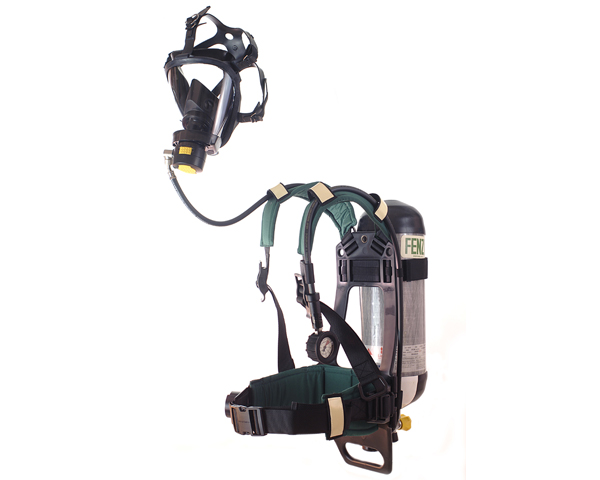
We have access to this outfit, so if you are a firefighter or just want to show off, a full face gas mask with oxygen tank backpack costs $2,500.
What is the right mask and how do you choose it?

There is quite a large range of pollution masks on the market. Many have been proven to filter out more than 80% of PM2.5 particles. However, many masks simply block large dust particles or the sun.
There are many different types of masks. For a daily commuter, the most important things to look for include: the size, fit, and seal on their face, as well as the filtration rates printed on the packaging or info slips, backed up by certification agencies.
Next, the mask should be adjustable so that it can be made looser or tighter to fit the individual. Although many brands don’t allow a person to test before they buy, it is important to try a mask on to see if it is comfortable, and if there is a good seal. Brands like AryMask allow customers to try the mask on before they buy in order to make sure there is a full seal.
As a more active outdoors person, a pollution mask that is stretchy and adjustable, that stays on the face as you move is the best choice. For someone who uses a mask to commute by motorbike, elasticity is less of an issue. If a person is outside for more than an hour a day, and the air pollution levels are over 100 PM2.5, they should protect themselves with a pollution mask. If they walk around polluted areas with lots of vehicles, or If they use a bicycle, they will be breathing in about 7 times more air than if sitting on a motorbike.
In the hot weather, it is important that a user can wear a mask even when it’s extremely hot. Only a few models of masks are made from mesh materials, while other materials such as neoprene tend to be very hot. For a humid climate, it’s best to use a light colored mask that will let the air flow around the filter.
To see a competitor comparison table as well as the factors that differ between pollution mask options, please see our feature comparison.
Do our lungs clean themselves?

Yes! Our lungs are self-cleaning. You can also help your lungs breathe easy.
If you’re a smoker, have exposure to air pollution, or have a chronic condition like asthma, COPD or cystic fibrosis, you’re probably happy to know that your lungs are cleaning as you read this.
Our lungs rebuild by growing new cilia. Cilia are what helps us keep our airways clear of mucus and dirt.
There are so many bad particles in the air we breathe that we often worry when we feel a sharp pain in our lungs. According to the World Health Organization (WHO), exposure to air pollution results in 4.2 million deaths worldwide each year Source. Lungs are self-cleaning because they repair themselves. Chronic conditions, such as COPD, asthma, and cystic fibrosis, cause excess mucus production or unusually thick mucus that can clog the lungs. There are some easy ways to help your lungs clean themselves, but for the most part they do the work on their own.
Here are 24 Facts about Lung Health
- 384 million people suffer from chronic obstructive pulmonary disease (COPD) and 3 million die from it each year, making it the third leading cause of death worldwide [1].
- 10 million people develop tuberculosis and 1.6 million die from it each year, making it the most common lethal infectious disease [2].
- 1.76 million people die from lung cancer each year, making it the deadliest cancer [3].
- 334 million people suffer from asthma [1].
- Asthma is the most common chronic disease of childhood, affecting 14 percent of children globally − and rising [1].
- 4 million people die from lower respiratory tract infections and pneumonia each year [1].
- Every minute, 2 children under 5 years old die from pneumonia [4].
- 80 percent of pneumonia deaths are in children under 2 years [4].
- Most (99 percent) deaths occur in low or middle-income countries [4]
- Pneumonia is the leading cause of death in the very young and very old.
- Passive smoke exposure also leads to respiratory disease. Since 1964, about 2.5 million nonsmokers died from health problems caused by exposure to second-hand smoke [1].
- 4.2 million people die every year as a result of exposure to ambient (outdoor) air pollution [5].
- 3.8 million people die every year as a result of household exposure to smoke from dirty cookstoves and fuels [5].
- 91 percent of the world’s population live in places where air quality exceeds WHO guideline limits [5].
Source link here
Here are 7 ways you can clear your airways:
1. Steam Therapy
Inhaling steam can momentarily help open your airways to help drain mucus. In cold or dry air you may feel it’s more difficult to breathe. Steam adds warmth and moisture, helping to loosen the mucus inside your airways and lungs. This is however only a temporary solution.
2. Controlled coughing
Coughing is a way for you to clear your airways. Doctors suggest that patients with COPD perform steps to control your cough.
- Sit on a chair with shoulders relaxed, keep both feet flat on the floor
- Fold your arms over your stomach
- Slowly inhale through your nose
- Slowly exhale while pushing the arms against the stomach
- Cough 2 or 3 times while exhaling with your mouth slightly open
- Slowly inhale through the nose
- Rest and repeat if you feel it helps
3. Drain mucus from the lungs
These processes also help remove mucus from your lungs. Basically, slowly inhale through your nose and exhale through your mouth. Each exhale should be twice as long as your inhale. It’s called 1:2 breathing.
- Lay on your back on the floor or a bed, place pillows under your hips, and breathe 1:2 for a few minutes.
- On your side, rest your head on your arm or pillow. Place pillows under your hips and breathe 1:2. Repeat on the other side to clear your other lung.
- On your stomach place a stack of pillows under your stomach. Lie on them but keep your hips above your chest. Fold your arms under your head for support and practice the same 1:2 breathing pattern.
4. Exercise can improve your physical and mental health. It can reduce the chance of getting many health conditions, including heart and lung disease or strokes. When the muscles work harder, your breathing rate increases which supplies more oxygen to your muscles. It also improves circulation which in turn makes your body more efficient hen removing carbon dioxide.
5. Green tea has many good antioxidants that can reduce inflammation in your lungs. In a recent study in Korea looking at 1000 people, those who drank 2 cups of green tea a day had better lung function.
6. Anti-inflammatory foods. Here are 8 foods that fight inflammation:
-
- Turmeric
- Leafy greens
 Cherries
Cherries
- Blueberries
- Olives
- Walnuts
- Beans



- Lentils
7. Cupping your hand and hitting your chest is another great way to remove excess mucus from your lungs. Rhythmically tap your chest wall to open up your airways and loosen some of the mucus in your lungs. Then use postural drainage to help clear your airways.
Outlook
We know that the fear of not being able to breathe is really scary. Our lungs are what keeps us breathing, so it’s important that you know that our lungs rebuild. An ex-smoker’s lungs can actually reduce their odds of dying from smoking by half after 10 years of quitting. Inflammation decreases and the chemicals that pass through the airways do not irritate the lining within.
Although our lungs have ways to protect themselves from damage, and do rebuild, long term exposure to chemicals and air pollution is not reversible. Damaged airways lose their shape and elasticity, as the alveoli in our lungs cannot exchange oxygen and carbon dioxide as efficiently.
It will really help to prevent your airways from getting clogged in the first place. Good ideas are to reduce second hand smoke, get a high quality mask for outdoors, get an air purifier in your home, and to keep your apartment clean.
How does active carbon remove small particles?

Using Active Carbon to Remove Particles???
What?!
Don’t we burn wood and coal which creates particle pollution and smoke that adds to greenhouse gasses? Yes, people have burned wood for a very long time, releasing smoke and gasses into our environment.
So how is it made?
Dense fibrous wood like hardwood or coconut shells are best to turn firewood into coal. It is normally cooked in a contained environment to speed up the process of creating charcoal. Once the charcoal is thoroughly cooked it has to be cooled down and rinsed to remove ashes. It is then crushed down and dried. Next the charcoal is mixed with calcium chloride or alternatives like lemon juice. Then the charcoal is cooked again to be activated.

Active carbon is a type of coal that is made from burning wood at high temperatures. Charcoal is treated with oxygen to open up millions of tiny pores between the carbon atoms. Each carbon particle/granule of carbon provides a large surface area/pore structure, allowing contaminants the maximum possible exposure to the active sites within the filter media. One pound (450 g) of activated carbon contains a surface area of approximately 100 acres. Active charcoal carbon filters are most effective at removing chlorine, sediment, volatile organic compounds (VOCs), taste and odour from water.
How does activated carbon remove particles?
Charcoal filters come in different forms such as solid carbon, impregnated foam materials, powder and cloth. The use of special manufacturing techniques results in highly porous charcoals that have surface areas of 300-2,000 square meters per gram. These so-called active, or activated, charcoals are widely used to adsorb odorous or colored substances from gases or liquids. The word adsorb is important here. When a material adsorbs something, it attaches to it by chemical attraction. The huge surface area of activated charcoal gives it countless bonding sites. When certain chemicals pass next to the carbon surface, they attach to the surface and are trapped.

The most advanced activated carbon filters, like those found in Blueair air purifiers, are infused with other compounds like magnesium dioxide and copper oxide to remove even more hazardous pollutants from the air, such as carbon monoxide, ethylene oxide, and ozone. Some modern activated carbon filters are also more adept at preventing a buildup of bacteria that can occur naturally over time.
The Best Filters For Polluted Air

Ideally, a HEPA filter is used to remove the majority of polluted air. HEPA stands for high-efficiency particulate air. A true HEPA filter is one that can trap 99.97 percent of dust particles that are 0.3 microns in diameter. The filter material is able to trap the particles because it is made up of very dense glass fibers. Dust particles either get stuck on impact, interception or diffusion.
HEPA filters were originally developed to clean up radioactive particles in the nuclear industry. Nowadays the filters are commonly found in households. A genuine and certified HEPA filter will guarantee prevention against mold, bacteria and viruses.
To put that in perspective, microparticles that are emitted from car exhaust is usually described as PM10 size or less than 10 microns wide. HEPA filters are therefore the best filters for closed areas.
However, people cannot wear HEPA filters as masks because they need a fan or machine to push air through them to work efficiently.
When it comes to respiratory equipment, NIOSH (the testing agency that certifies filters) recognizes 9 different types based on efficiency. Letters refer to the filter’s resistance to oils. N means not resistant to oil, R is oil resistant, and P is oil proof. The 95 label is tested to prevent against 95% of PM2.5 particles, the 99 label prevents 99% or more, and the 100 labelled masks are efficient against 99.97% of PM2.5 particles.

Active carbon is one of the most porous filter materials and is mostly used in water filters but has recently also been woven into fabrics for respirators. Active carbons can catch as much as 99.99% of particles 0.12 microns and above, about 2 times as small as what a HEPA filter removes.

The questions for some is if the pollution they are encountering is also going to be able to get into their eyes. In a place that has chemicals and toxic vapors floating in the air, a full-face respirator with organic vapor filters is best. This kind of mask should prevent against pesticides, epidemics, chemicals, as well as any particles over 0.3 microns in size.

If pollutants won’t get into the eyes, a respirator with a pair of P100 filters will do well in preventing the breathing of all toxins. A 3M gas mask is less costly than a full-face mask and the filter cartridges can be purchased separately. For different situations, the right cartridges can be used, and P100 filters can also be attached to most half size respirators.

Next in line is a high quality FFP3 certified mask, which means it’s an N99 mask called the 3M Aura 9332+. This is the disposable fabric mask that has high resistance to particles due to the thick microfiber you breathe through when wearing it. It won’t last that long though due to its rather flimsy straps.
Other N99 rated masks are the next best masks which comply with NIOSH ratings to block particles as small as 0.3 microns. There are numerous masks with N99 ratings made by many factories and branded by large or small bra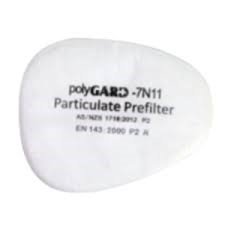 nds like HoneyWell, 3M or Zelbuck.
nds like HoneyWell, 3M or Zelbuck.
Then we go down a level in protection to a respirator that blocks 97% of organic vapors, which drops it down to fit into the N95 rating.
Disposable fabric masks are usually also rated N95, which means they block 95% of PM2.5 particles, but do not resist oils. We have seen more and more affordable options available recently.
Exhalation valves are great to have on a mask because they allow you to breathe out. If you are sick however, do note that your coughs, sneezes or exhales will leave the mask through the valves. We provide masks for hot climates so they need to have valves, and we suggest to remove the mask when you sneeze or cough so your filter does not get contaminated.
Do be careful though that there are manufacturers that do not test their masks but still go ahead and stamp them with the N95, N99 or other labels. We’ve tested the fakes and they tend to only block 60-90% of particles. If you’re hesitating buying a mask because it has such an affordable price, do check the box or papers for its lot code which you can check on the manufacturer’s website for authenticity.
The Negative Effects of Long-term Pollution

Those affected most by pollution are young people with developing lungs, the elderly, and those with weak immune systems. According to WHO, there are 4.2 million people dying EVERY year from air pollution. It is very difficult for many people to escape the harmful effects of air pollution as they likely have very low wages and don’t have much of an option of where they can move to. No matter where you live, these small particles are leaking into your home environments and deep into your lungs where they cause permanent damage.
Long-term health effects from air pollution include heart disease, lung cancer, and respiratory diseases such as emphysema. Air pollution can also cause long-term damage to people’s nerves, brain, kidneys, liver, and other organs. The types of pollution include fossil fuel combustion usually used to make electricity or in other industrial production. Particulate matter is created from factories and cars, but also through natural events like forest fires and dust storms.
The impact on the human body can be aggravated asthma, irregular heartbeats, decreased lung function, increased coughing, nonfatal heart attacks and premature death, according to the EPA.
To prevent against the dangerous of small particles, we should invest in air purifiers in the areas we spend most of our time in, and masks for when we are out and about.
“The true cost of climate change is felt in our hospitals and in our lungs. The health burden of polluting energy sources is now so high, that moving to cleaner and more sustainable choices for energy supply, transport and food systems effectively pays for itself,” says Dr Maria Neira, WHO Director of Public Health, Environmental and Social Determinants of Health.



